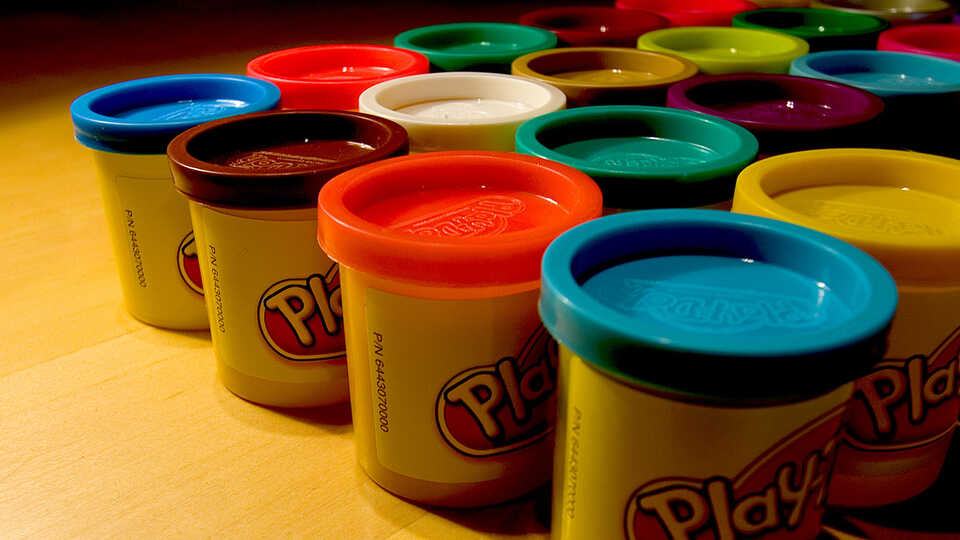In this activity students will:
- model the relative sizes of Earth, Mars and Jupiter and their largest moons.

© Dennis Brekke
Do you know the relative sizes of the moons in our solar system? Put yourself to the test with some Play-doh. Size comparisons between moons and their planets can be surprisingly tricky. This activity allows students to model, in three dimensions, the relative sizes of the moons and their planets.
In this activity students will:
Start by reading the instructions handout. Students should get into working with the play-dough as quickly as possible.
INSTRUCTIONS
Follow the instructions as to how to divide up their play-dough, placing the parts in the proper planet or moon boxes. Each time the play-dough is divided up and parts are combined to make a planet or moon, be sure students roll the combined parts around in their hands until the planet has a ball shape. As seen in the images on the next page.
planet: In the solar system, a planet is a large round object that orbits the Sun and has cleared out most of the other objects in its orbit.
moon: A natural object that orbits a larger object.
solar system: The Sun and all of the planets, comets, moons, etc. that revolve around it.
This activity leads students to explore the concepts of size using 3-dimensional models to understand the relative sizes of some of the moons and their planets. Students begin with thinking about their own internal mental models, then create a model of these objects.
Scientists develop and use models in order to explore how systems work. They can help make a concept that is hard to see become visible. The Next Generation Science Standards state that by the end of 5th grade, students should be able to use models to describe and/or predict phenomena. Additionally, the standards also mention that students should be able to “identify the limitations of models.”
For this model, if you strictly convert the size of the planets and their moons, students would be cutting in 1/16th and 1/8th s . Therefore we rounded the fractions of volume so students will be able to have an easier time dividing their volumes.
Common Misperceptions
Models and illustrations of the Solar System often misrepresent the true scales and distances involved. The difficulty lies in the vast difference between the relative sizes of planetary bodies and the distances between them. For example, an accurate model using a 1” sphere to represent the Sun results in a distance to Pluto of over 350 feet (more than a football field away), and most of the planets would appear no larger than tiny specks.
It is usually beneficial to address these two dimensions separately, using one model to compare the sizes of the planets and their moons, and another to illustrate their relative distances from the Sun and each other. By combining this activity with the activity “Pocket Solar System”, teachers can address the misconceptions prevalent in our depictions of the Solar System.
Size comparisons between planets and their moons can be surprisingly tricky. Many illustrations of the planets and their moons do not correctly represent their proper relative sizes, often showing the inner planets as much too large relative to the outer ones. To depict things correctly, for example, it would take 11 copies of Earth to stretch across the full diameter of Jupiter. And while this can be easily illustrated (we do it this way in our planetarium programs), it is still a 2-dimensional representation that does not fully capture the difference in volume between these objects.
This activity is adapted from the Worlds in Comparison lesson originally developed by Dennis Schatz, Pacific Science Center, and further adapted by Anna Hurst, Astronomical Society of the Pacific, 2008.
Science and Engineering Practices
Disciplinary Core Ideas
Cross-Cutting Concepts
The activity outlined here is just one step toward reaching the Performance Expectations listed below. Additional supporting materials and lessons will be required.
MS-ESS1-3: Analyze and interpret data to determine scale properties of objects in the solar system